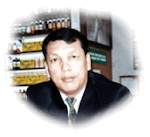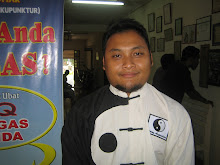Thursday, January 13, 2011
Trial of Acupuncture Treatment in Sweden
A randomised-controlled trial in Sweden of acupuncture and care interventions for the relief of inflammatory symptoms of the breast during lactation.
Kvist LJ, Hall-Lord ML, Rydhstroem H, Larsson BW.
Department of Obstetrics and Gynaecology, Floor 2, Helsingborg Hospital, Helsingborg, SE-251 87 Sweden. linda.kvist@helsingborgslasarett.se
Abstract
OBJECTIVES: to further compare acupuncture treatment and care interventions for the relief of inflammatory symptoms of the breast during lactation and to investigate the relationship between bacteria in the breast milk and clinical signs and symptoms.
DESIGN: randomised, non-blinded, controlled trial of acupuncture and care interventions.
SETTING: a midwife-led breast feeding clinic in Sweden.
PARTICIPANTS: 205 mothers with 210 cases of inflammatory symptoms of the breast during lactation agreed to participate. The mothers were randomly assigned to one of three treatment groups, two of which included acupuncture among the care interventions and one without acupuncture.
All groups were given essential care. Protocols, which included scales for erythema, breast tension and pain, were maintained for each day of contact with the breast feeding clinic. A Severity Index (SI) for each mother and each day was created by adding together the scores on the erythema, breast tension and pain scales. The range of the SI was 0 (least severe) to 19 (most severe).
FINDINGS: no significant difference was found in numbers of mothers in the treatment groups, with the lowest possible score for severity of symptoms on contact days 3, 4 or 5. No statistically significant differences were found between the treatment groups for number of contact days needed until the mother felt well enough to discontinue contact with the breast feeding clinic or for number of mothers prescribed antibiotics.
Significant differences were found in the mean SI scores on contact days 3 and 4 between the non-acupuncture group and the two acupuncture groups. Mothers with less favourable outcomes (6 contact days, n=61) were, at first contact with the midwife, more often given advice on correction of the baby's attachment to the breast.
An obstetrician was called to examine 20% of the mothers, and antibiotic treatment was prescribed for 15% of the study population. The presence of Group B streptococci in the breast milk was related to less favourable outcomes.
KEY CONCLUSIONS AND IMPLICATIONS FOR PRACTICE: if acupuncture treatment is acceptable to the mother, this, together with care interventions such as correction of breast feeding position and babies' attachment to the breast, might be a more expedient and less invasive choice of treatment than the use of oxytocin nasal spray.
Midwives, nurses or medical practitioners with specialist competence in breast feeding should be the primary care providers for mothers with inflammatory symptoms of the breast during lactation. The use of antibiotics for inflammatory symptoms of the breast should be closely monitored in order to help the global community reduce resistance development among bacterial pathogens.
Kvist LJ, Hall-Lord ML, Rydhstroem H, Larsson BW.
Department of Obstetrics and Gynaecology, Floor 2, Helsingborg Hospital, Helsingborg, SE-251 87 Sweden. linda.kvist@helsingborgslasarett.se
Abstract
OBJECTIVES: to further compare acupuncture treatment and care interventions for the relief of inflammatory symptoms of the breast during lactation and to investigate the relationship between bacteria in the breast milk and clinical signs and symptoms.
DESIGN: randomised, non-blinded, controlled trial of acupuncture and care interventions.
SETTING: a midwife-led breast feeding clinic in Sweden.
PARTICIPANTS: 205 mothers with 210 cases of inflammatory symptoms of the breast during lactation agreed to participate. The mothers were randomly assigned to one of three treatment groups, two of which included acupuncture among the care interventions and one without acupuncture.
All groups were given essential care. Protocols, which included scales for erythema, breast tension and pain, were maintained for each day of contact with the breast feeding clinic. A Severity Index (SI) for each mother and each day was created by adding together the scores on the erythema, breast tension and pain scales. The range of the SI was 0 (least severe) to 19 (most severe).
FINDINGS: no significant difference was found in numbers of mothers in the treatment groups, with the lowest possible score for severity of symptoms on contact days 3, 4 or 5. No statistically significant differences were found between the treatment groups for number of contact days needed until the mother felt well enough to discontinue contact with the breast feeding clinic or for number of mothers prescribed antibiotics.
Significant differences were found in the mean SI scores on contact days 3 and 4 between the non-acupuncture group and the two acupuncture groups. Mothers with less favourable outcomes (6 contact days, n=61) were, at first contact with the midwife, more often given advice on correction of the baby's attachment to the breast.
An obstetrician was called to examine 20% of the mothers, and antibiotic treatment was prescribed for 15% of the study population. The presence of Group B streptococci in the breast milk was related to less favourable outcomes.
KEY CONCLUSIONS AND IMPLICATIONS FOR PRACTICE: if acupuncture treatment is acceptable to the mother, this, together with care interventions such as correction of breast feeding position and babies' attachment to the breast, might be a more expedient and less invasive choice of treatment than the use of oxytocin nasal spray.
Midwives, nurses or medical practitioners with specialist competence in breast feeding should be the primary care providers for mothers with inflammatory symptoms of the breast during lactation. The use of antibiotics for inflammatory symptoms of the breast should be closely monitored in order to help the global community reduce resistance development among bacterial pathogens.
Subscribe to:
Post Comments (Atom)

























No comments:
Post a Comment